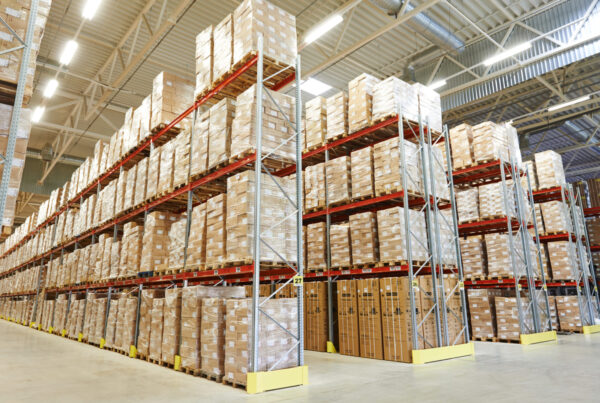What is Warehouse and Inventory Management?
Warehouse and inventory management are interrelated concepts in the field of supply chain management. At the core of these systems are the efficient handling, storage, and flow of goods within a warehouse and the effective control of stock levels. Both are essential for a smooth, lean, and profitable operation.
Warehouse management is primarily concerned with optimizing the physical operations within a warehouse. This involves organizing, tracking, and facilitating the movement and storage of goods from the time they enter the warehouse until they leave. Warehouse managers need to consider the layout of the warehouse, the use of storage equipment, and the personnel needed to handle the goods. A key tool in aiding warehouse management is the use of warehouse inventory management software. This technology helps manage the complex tasks involved in running a warehouse efficiently.
On the other hand, inventory management focuses on maintaining optimal stock levels to meet customer demand while minimizing holding costs. Inventory managers must balance having enough stock to satisfy customer orders with the financial and logistical implications of holding too much inventory. Utilizing inventory management strategies in supply chain, such as just-in-time and level strategy, can ensure that the right amount of stock is available at the right time, thus minimizing waste and maximizing customer satisfaction.
Together, warehouse and inventory management create a harmonized system that allows businesses to manage their resources effectively. By integrating warehouse inventory management systems and strategies, companies can achieve an efficient, cost-effective supply chain. These systems leverage technologies like inventory barcode systems to improve accuracy, speed up processes, and minimize errors. In the broader picture, warehouse and inventory management are fundamental components of effective supply chain management strategies and best manufacturing practices.
Warehouse Management vs. Inventory Management
Warehouse management and inventory management are two complementary processes that, when coordinated effectively, can significantly optimize supply chain management flows.
Warehouse management primarily deals with the physical management of goods within a warehouse, ensuring that items are correctly stored, easily retrievable, and efficiently dispatched. It requires strategic planning, from the optimal arrangement of goods for easy access to the efficient utilization of available space. The use of tools like warehouse inventory management software helps streamline these operations by providing real-time visibility into the warehouse, facilitating quicker decision-making and improved productivity.
Inventory management, in contrast, focuses on maintaining optimal stock levels to meet customer demand, thereby minimizing storage costs and wastage. This involves forecasting demand, tracking inventory levels, deciding when and how much to order, and implementing inventory control strategies. ERP systems for manufacturing are often used here, as they can integrate various aspects of inventory management, providing a holistic view of the entire process.
While both processes have their distinct objectives, they overlap and interact significantly. For instance, effective inventory management can’t be achieved without a well-managed warehouse, as the physical location, condition, and accessibility of goods directly impact the ability to control inventory levels accurately. Conversely, a warehouse’s operational efficiency is dependent on the accuracy and timeliness of inventory information.
These processes can also work together to implement various supply chain management strategies. For example, a just-in-time strategy in supply chain management, which aims to minimize inventory holding costs, requires both precise inventory control to determine when more stock is needed and an efficient warehouse operation to ensure the timely reception and dispatch of goods.
Hence, a synchronized approach to warehouse and inventory management, underpinned by the strategic use of technologies like inventory barcode systems, handheld scanners, and ERP systems, are key to streamlining operations and enhancing the efficiency of the supply chain.
How to Manage Warehouse Inventory
Effective warehouse inventory management involves a blend of various strategies and technological tools. Most inventory management strategies include some aspect of lean inventory management, the First-In-First-Out (FIFO) method, the Just-In-Time (JIT) approach, and the level strategy. By incorporating these strategies, businesses can ensure that goods are stored and dispatched in an efficient, cost-effective manner.
A well-organized warehouse is a key starting point. Goods should be stored systematically, taking into account the frequency of their movement. Frequently moved items are best placed in easily accessible locations to reduce pick times. Proper organization of goods also helps to prevent damage and loss of inventory, contributing to cost-effectiveness.
A critical yet sometimes overlooked aspect of warehouse management is staff training. Proper training equips staff with the skills to handle goods properly, use equipment safely, and understand and follow the warehouse’s operational procedures. Safety training should include how and when to conduct routine safety inspections, provision of appropriate personal protective equipment, and the enforcement of safety protocols such as proper lifting techniques and the safe operation of machinery.
Keeping aisles clear is crucial for the safe and efficient movement of goods within the warehouse. Clear aisles ensure that staff or automated systems can easily navigate the warehouse, minimizing the risk of accidents and ensuring quicker movement of goods from storage areas to dispatch points.
Clear labeling of goods is another important aspect of warehouse management. Whether using a traditional method or more advanced technology like barcodes or RFID tags, accurate labeling enables quicker identification and retrieval of goods. This not only speeds up warehouse operations but also reduces errors in order picking.
Software plays an important role in enhancing these practical aspects of warehouse management, which leads us to the topic of using software tools for warehouse inventory management.
Using Software for Warehouse Inventory Management
Barcodes and inventory management software have revolutionized the way warehouses operate, enabling a level of precision and efficiency that wasn’t possible with manual methods.
Barcode technology plays an integral role in modern warehouse operations. By labeling inventory with unique barcodes, businesses can track and manage their stock more accurately and efficiently. Handheld barcode scanners allow for real-time updates to the inventory system as goods are received, moved, or dispatched. This not only enhances inventory control but also facilitates quick and easy location of items within the warehouse, reducing pick times and minimizing errors.
On the software side, Material Requirements Planning (MRP) and warehouse inventory management software can guide the staging process in a warehouse. Staging refers to the process of preparing goods for dispatch and/or production. This can involve assembling different items for an order or moving goods to a specific location for quick loading onto delivery vehicles or getting all the needed materials for production ready to start the day. By analyzing sales orders, inventory levels, and other relevant data, MRP and warehouse inventory management software can determine the optimal time to stage goods, ensuring they’re ready for dispatch when needed while minimizing the time they spend occupying valuable warehouse space.
Implementing these technologies requires investment but can yield significant returns in the form of improved accuracy, efficiency, and productivity. As such, they are vital tools for any business looking to optimize its warehouse operations.
Want to learn more about how Mar-Kov’s Inventory Management solutions can optimize your warehouse operations? Book a demo here and we are happy to talk.




